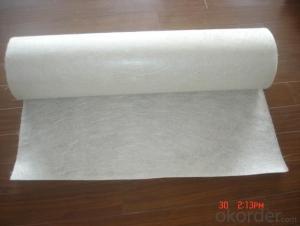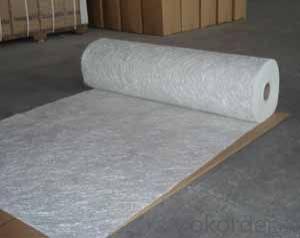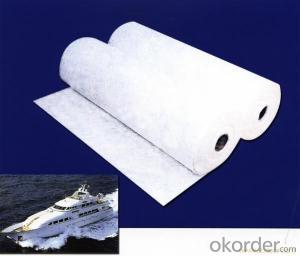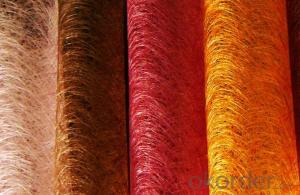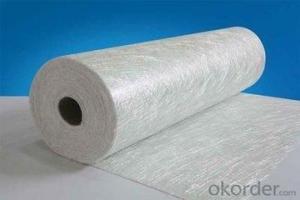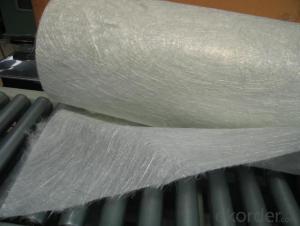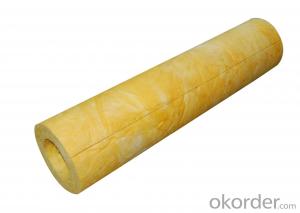2015 E-glass Assembled Roving for Chopped Strand Mat
- Loading Port:
- Tianjin
- Payment Terms:
- TT OR LC
- Min Order Qty:
- 100 m.t.
- Supply Capability:
- 20000 m.t./month
OKorder Service Pledge
OKorder Financial Service
You Might Also Like
Quick Details
| Place of Origin: | Hebei, China (Mainland) | Brand Name: | CNBM | Model Number: | YY-ER-CSM |
| Application: | FRP Steel, rod, stick, grating, channel,pipe | Surface Treatment: | Vinyl Coated | Technique: | Winding Filament Roving |
| Dimensions: | E-glass assembled roving | Name: | E-glass assembled roving for chopped strand mat | Type: | E-Glass |
| Yarn Structure: | Single Yarn | Fiber type: | Single-end roving | Compatible resin: | UP, EP, VE, Phenolic resin. etc. |
| Tex Count: | 200-9600tex | Color: | White | Filament Diameter: | 9-24um |
Packaging & Delivery
| Packaging Details: | cartons or pallets,customer request |
| Delivery Detail: | 7-15 days after order confirmed |
Product Description
E-Glass Assembled Roving for Chopped Strand Mat is compatible with Unsatured Polyester (UP),Vinylester (VE) and Epoxy (EP).It is mainly used in the production of powder and emulsion bonded Chopped Strand Mat and also Stitched Combo Mat . It can be used in FRP boats , sanitary apparatus and so on .
Product Feature:
1. Good choppability
2. Excellent dispersion , no matchstick
3. Good anti-static properties
4. Good wet-out in resin
picture
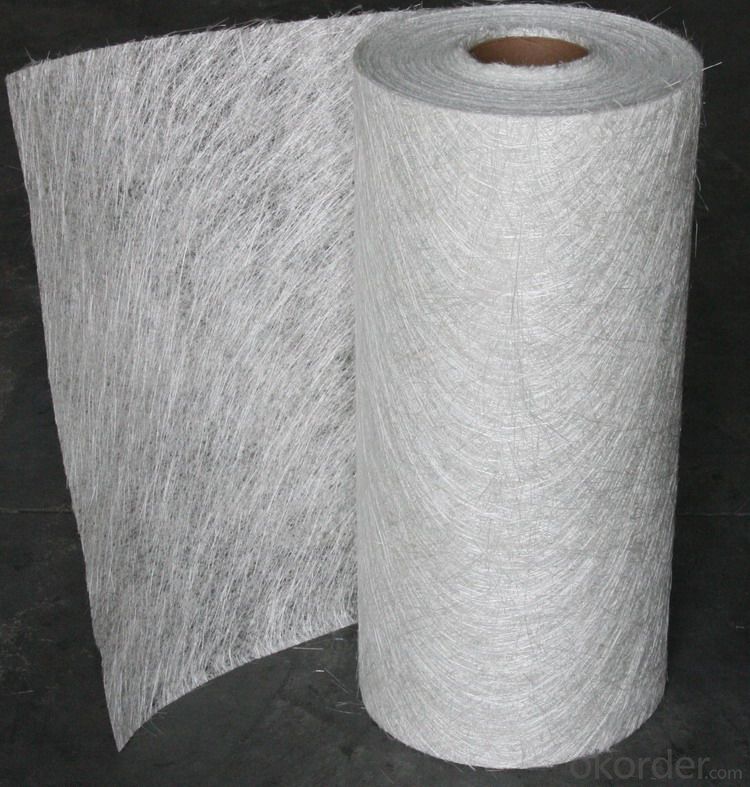
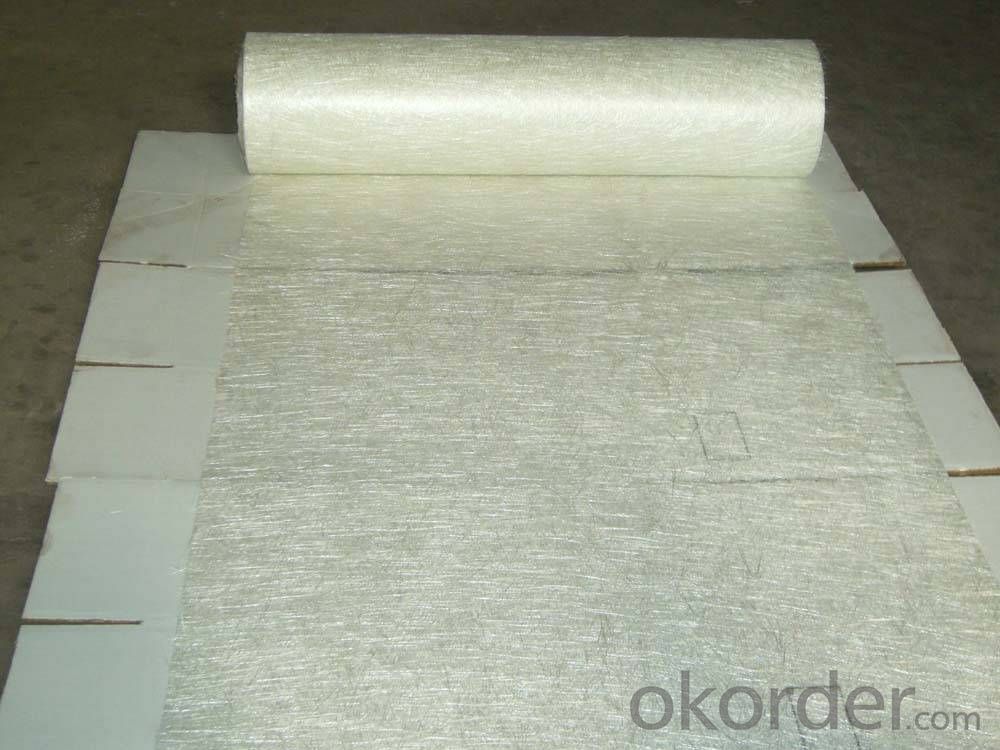


- Q:Can fiberglass mat tissue be used for flooring insulation?
- Typically, fiberglass mat tissue is not employed for flooring insulation. It is a lightweight substance frequently utilized in the construction sector to reinforce plaster and concrete, and as insulation in walls and ceilings. However, for flooring insulation purposes, other materials like foam boards or batt insulation are generally favored. These materials offer superior thermal and sound insulation features that are specifically tailored for flooring applications. Moreover, they are simpler to install and better equipped to endure the pressures and demands of foot traffic on the flooring.
- Q:Is fiberglass mat tissue suitable for insulation in high-rise buildings?
- Yes, fiberglass mat tissue is suitable for insulation in high-rise buildings. It is commonly used as an insulating material due to its excellent thermal and sound insulation properties. Fiberglass mat tissue is lightweight, fire-resistant, and has a high melting point, making it a safe and effective choice for insulating high-rise buildings. Additionally, it is easy to install and offers good resistance against moisture and mold, ensuring long-term performance and energy efficiency.
- Q:Can fiberglass mat tissue be used for making lightweight flooring?
- Yes, fiberglass mat tissue can be used for making lightweight flooring. It is a versatile material that offers excellent strength and durability while being lightweight, making it a suitable choice for flooring applications where weight reduction is desired.
- Q:What are the different reinforcement densities available for fiberglass mat tissue?
- The different reinforcement densities available for fiberglass mat tissue can vary depending on the specific manufacturer and product. However, common options include low density (lightweight), medium density, and high density fiberglass mat tissues. These densities are designed to provide different levels of strength, flexibility, and durability for various applications in industries such as construction, automotive, and marine.
- Q:How does fiberglass mat tissue compare to polystyrene insulation?
- Fiberglass mat tissue and polystyrene insulation are two different materials with distinct properties and uses. Fiberglass mat tissue is a woven or non-woven fabric made from glass fibers. It is commonly used as a reinforcement material in various applications such as roofing, pipes, and automotive parts. Fiberglass mat tissue provides excellent strength, durability, and resistance to moisture and chemicals. On the other hand, polystyrene insulation refers to rigid foam boards or expanded polystyrene (EPS) beads used for thermal insulation purposes. Polystyrene insulation offers high thermal resistance, making it an effective material for insulating buildings and reducing energy consumption. Comparing the two, fiberglass mat tissue is primarily used for reinforcement and structural purposes, whereas polystyrene insulation is specifically designed for thermal insulation. The choice between them depends on the specific requirements of the application, such as the need for structural strength or thermal efficiency.
- Q:Does fiberglass mat tissue provide any mold resistance?
- Fiberglass mat tissue does not inherently provide mold resistance. However, it can contribute to mold prevention when used in conjunction with other mold-resistant materials and proper construction practices. The fiberglass mat tissue itself is not resistant to mold growth, but it can be used as a reinforcement layer in mold-resistant building materials, such as mold-resistant drywall or sheathing. These materials are designed to resist mold growth by incorporating additives or coatings that inhibit the growth of mold and mildew. Additionally, it is important to ensure proper installation and maintenance of these materials to minimize moisture buildup and create a less favorable environment for mold growth.
- Q:How does the width and length of fiberglass mat tissue affect its application?
- Various aspects of fiberglass mat tissue application can be greatly influenced by its width and length. The width of the mat tissue has a significant impact on both coverage area and ease of installation. A wider mat tissue can cover a larger surface area, reducing the number of individual sheets needed for a project. This can result in time and effort savings, particularly for large-scale applications. Moreover, the width of the mat tissue can also affect the overall strength and durability of the final product. A wider mat tissue provides greater reinforcement, making it suitable for applications that require enhanced strength and stability. For instance, it can be utilized in the construction of structural components or high-stress areas. On the other hand, the length of the mat tissue affects convenience and flexibility during installation. Longer rolls of mat tissue enable continuous installation without the need for frequent seams or joints. This advantage is particularly valuable when working on substantial projects, as it minimizes potential weak points and enhances the overall integrity of the fiberglass application. Furthermore, the length of the mat tissue also impacts the ease of handling and transportation. Longer rolls can pose challenges in terms of maneuverability and transport, especially in confined spaces or through narrow doorways. Consequently, it is crucial to consider the length based on the accessibility and logistics of the specific application site. To summarize, both the width and length of fiberglass mat tissue play vital roles in its application. The width influences coverage area, strength, and durability, while the length affects convenience, flexibility, and handling during installation. Taking these factors into account enables a more efficient and successful application of fiberglass mat tissue across various industries and projects.
- Q:Is fiberglass mat tissue suitable for insulation in wastewater treatment plants?
- Yes, fiberglass mat tissue is suitable for insulation in wastewater treatment plants. Wastewater treatment plants often require insulation to prevent heat loss, control temperature, and protect against corrosion. Fiberglass mat tissue is a commonly used material for insulation in these facilities due to its high thermal resistance, excellent chemical resistance, and durability. It can effectively insulate pipes, tanks, and other equipment in wastewater treatment plants, ensuring optimal performance and energy efficiency. Additionally, fiberglass mat tissue is lightweight, easy to install, and cost-effective, making it a practical choice for insulation in these harsh environments.
- Q:Can fiberglass mat tissue be used for insulation in pharmaceutical storage areas?
- No, fiberglass mat tissue is not suitable for insulation in pharmaceutical storage areas. This material may release particles or fibers that can contaminate the pharmaceutical products, which could compromise their quality and safety. It's essential to use insulation materials that are specifically designed and approved for pharmaceutical storage areas to ensure optimal conditions and adherence to regulatory standards.
- Q:Can fiberglass mat tissue be used for reinforcing fiberglass pools?
- Fiberglass mat tissue is indeed suitable for reinforcing fiberglass pools. This product, known for its thin and flexible nature, is widely utilized in the construction and repair of fiberglass structures, including pools. Comprising delicate glass fibers bonded together with a binder, the mat tissue offers added strength and reinforcement when applied to the pool's surface. By doing so, it effectively prevents cracks and damage. Typically, it is used in conjunction with fiberglass resin, which acts as an adhesive to securely attach the mat tissue to the pool surface. The practice of utilizing fiberglass mat tissue for reinforcing fiberglass pools is widely adopted, as it significantly increases the pool's lifespan and durability.
1. Manufacturer Overview |
|
|---|---|
| Location | |
| Year Established | |
| Annual Output Value | |
| Main Markets | |
| Company Certifications | |
2. Manufacturer Certificates |
|
|---|---|
| a) Certification Name | |
| Range | |
| Reference | |
| Validity Period | |
3. Manufacturer Capability |
|
|---|---|
| a)Trade Capacity | |
| Nearest Port | |
| Export Percentage | |
| No.of Employees in Trade Department | |
| Language Spoken: | |
| b)Factory Information | |
| Factory Size: | |
| No. of Production Lines | |
| Contract Manufacturing | |
| Product Price Range | |
Send your message to us
2015 E-glass Assembled Roving for Chopped Strand Mat
- Loading Port:
- Tianjin
- Payment Terms:
- TT OR LC
- Min Order Qty:
- 100 m.t.
- Supply Capability:
- 20000 m.t./month
OKorder Service Pledge
OKorder Financial Service
Similar products
New products
Hot products
Hot Searches
Related keywords
